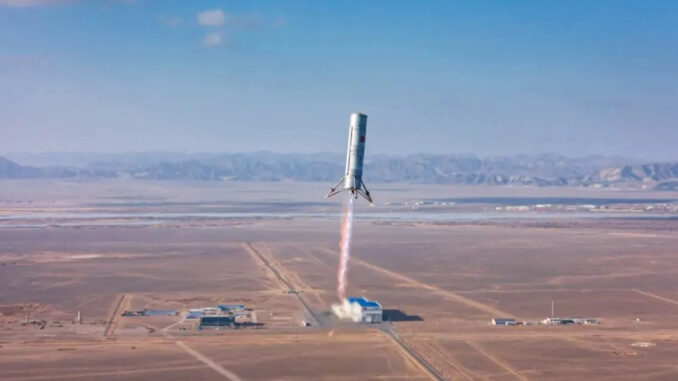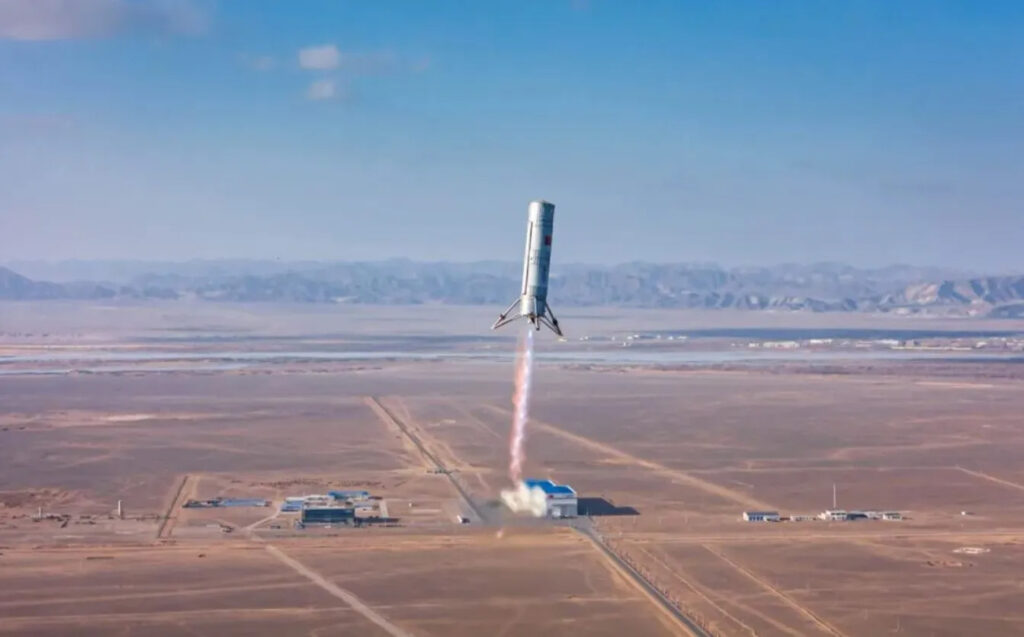
The Chinese reusable spaceplane has landed after 267 days in orbit, marking a major advance in reusable space technology.
The Chinese reusable spaceplane has completed its third orbital mission after 267 days in orbit. The vehicle, developed by the China Aerospace Science and Technology Corporation (CASC), is part of China’s efforts to develop reusable space solutions. The aim is to reduce costs and make access to space more affordable and flexible. Although little information is available due to the secretive nature of the mission, close proximity operations (RPO) with objects released into orbit have been observed, which could indicate a variety of future applications, ranging from satellite maintenance to operations against adversary satellites.
Technological breakthrough for China’s reusable spaceplane
The Chinese spaceplane marks a significant technological breakthrough in the field of reusable spacecraft. Launched for the third time on 14 December 2023 from the Jiuquan spaceport aboard a Long March 2F rocket, the spaceplane flew for 267 days** before returning to Earth on 6 September 2024. This is comparable to its previous mission, which lasted 276 days. The aim of this vehicle is to demonstrate the feasibility of a reusable space transportation system, which would considerably reduce the cost of space missions while increasing their frequency.
In comparison, other reusable space missions, such as the US X-37B programme, show similarities in terms of duration and objectives. However, China maintains a high level of secrecy around its space programme, releasing few details about the technical characteristics of the vehicle or the specific results of the experiments carried out.
The role of proximity and rendezvous operations in orbit
One of the notable aspects of the Chinese spaceplane’s mission is the performance of rendezvous and proximity operations (RPO) with objects that it has itself released into orbit. These operations, observed during the second and third missions, suggest that the spacecraft is capable of intentionally approaching another object in orbit, a major technological asset.
RPO can have several applications. In a civil context, they could be used for maintenance, repair or recovery missions to damaged satellites, which would considerably improve the lifespan of space systems. However, these capabilities could also be used for more controversial purposes, such as anti-satellite operations, where a spacecraft is used to disable or destroy opposing satellites in orbit.
Mastery of such complex manoeuvres strengthens China’s strategic position in space, giving it not only enhanced defensive capabilities but also influence in the technological race for control of space.

Development of a reusable space transport system
China’s spaceplane programme is part of a wider strategy to develop a fully reusable space transportation system, based on the concept of a reusable suborbital stage. The first test of this technology took place in 2021, followed by a second in August 2022. The aim is to develop a vehicle with vertical take-off and horizontal landing that could be used for frequent launches, thereby reducing dependence on expensive resources.
The China Aerospace Science and Technology Corporation (CASC) has already received national support, including funding from the National Science Foundation of China, to accelerate the development of this system. The ability to reuse a spaceplane frequently and efficiently would represent a major step forward in reducing the costs associated with space missions, while increasing access to space for scientific, commercial or military missions.
The time between landing and re-launch of these spacecraft is a key indicator of the degree of reusability achieved. By observing the rapidity of redeployment of the spaceplane, we will be able to judge the maturity of the programme in terms of reusable flights. Initial observations suggest that the spaceplane’s redeployment cycle has been reduced, from almost two years between the first and second missions to just seven months between the second and third.
Strategic and geopolitical consequences
Mastery of reusable spaceplane technology gives China a major strategic advantage in the space sector. In addition to the commercial and scientific applications, this capability considerably strengthens China’s military potential. Reusable spacecraft enable frequent launches at lower cost, increasing the flexibility and speed of space operations.
The fact that China is maintaining a high degree of secrecy around this programme reinforces the geopolitical uncertainties. The United States, with its X-37B programme, is keeping a close eye on Chinese progress in this area, as the ability to carry out complex manoeuvres in orbit, including near-field operations, could have sensitive military implications. China’s development of advanced space technologies could increase international tensions, especially in the context of the increasing militarisation of space.
From a geopolitical point of view, mastery of reusable space technologies could also strengthen China’s ability to carry out interplanetary missions, and possibly play a central role in lunar and Martian exploration. China’s space ambitions, which include the construction of a lunar station by the 2030s, are part of this overall strategy to increase its influence in space.
The successful return of China’s reusable spaceplane after 267 days in orbit confirms the increasing maturity of Chinese space technology. By carrying out proximity operations and perfecting a reusable space transportation system, China is showing that it is ready to compete with the major space powers on a technological and strategic level.
This advance could not only reduce the cost of space missions, but also provide China with new military and commercial capabilities. As the programme evolves, it will be crucial to monitor the impact of this technology on the geopolitical balance and on the way the major powers interact in space in the decades to come.
War Wings Daily is an independant magazine.